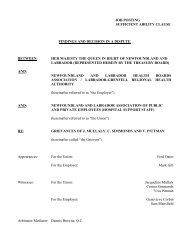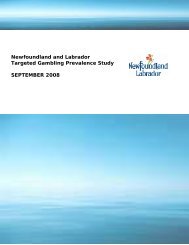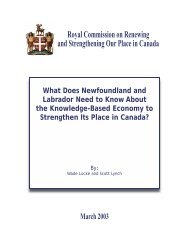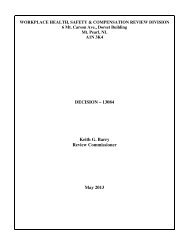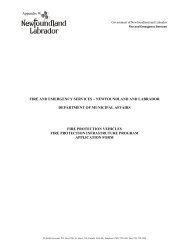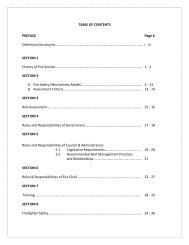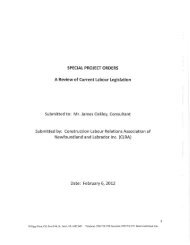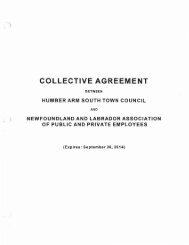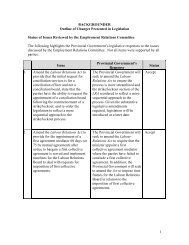Basic Level Pre-Course Reading
Basic Level Pre-Course Reading
Basic Level Pre-Course Reading
Create successful ePaper yourself
Turn your PDF publications into a flip-book with our unique Google optimized e-Paper software.
Chapter 5<br />
Control the Situation<br />
usually forms a pear-shaped plume as it travels downwind. High wind speeds will<br />
break up the cloud and disperse it more rapidly.<br />
• Air stability is another critical factor. During hot, sunny days, the ground-level air<br />
tends to rise, taking the toxic cloud with it. These unstable conditions usually limit<br />
the downwind distance over which the cloud will travel. During evenings and<br />
overcast days, the ground air tends to stay low and so will the cloud.<br />
• High ambient air temperature tends to volatilize a chemical agent more readily,<br />
increasing the amount of vapour hazard near non protected persons.<br />
• Low ambient air temperature tends to decrease the volatility of chemical agents.<br />
Some agents such as RD mustard will freeze at 14 º C.<br />
• <strong>Pre</strong>cipitation, particularly mist or heavy rain, will knock down agent vapours and<br />
aerosols.<br />
• Cloud cover and sunlight together have several effects on a toxic cloud. During<br />
the day, clear skies and light cloud cover normally result in unstable conditions.<br />
Increased cloud cover results in more stable conditions. At night, overall conditions<br />
tend to be more stable, regardless of cloud cover.<br />
Terrain is another important factor. The presence of buildings and features such as<br />
hills, valleys, and trees, can have a considerable effect on the wind direction and the<br />
degree of air turbulence. In a city with tall buildings, the wind can move in different<br />
directions within a few blocks. Such prominent features may also break up a vapour<br />
cloud.<br />
Type and quantity of the agent are also factors. Some agents evaporate relatively<br />
quickly and create a dense, short-lived vapour hazard. Other agents evaporate very<br />
slowly and could create a low-density cloud of long duration.<br />
Dissemination methods also affect cloud formation. Vapour from a liquid puddle<br />
will form a less dense cloud than one from a pressurized spraying device. The use of<br />
an explosive to disperse the agent will instantly create a vapour cloud. The<br />
characteristics of the vapour cloud depend on the type and amount of agent, and the<br />
skill of the terrorist in the construction of an explosive device.<br />
5.2 Perimeters and Hazard Zones<br />
Inner (safety) and Outer (security) perimeters should be quickly established by those<br />
first on scene. It is critical to correctly cordon off the area. This is a primary safety<br />
measure that will contribute to effectively controlling the situation.<br />
Normally the Emergency Response Guidebook provides stand-off distances when<br />
commercial Dangerous Goods are involved. In a terrorist incident, there will rarely be<br />
Dangerous Goods symbols or placards to assist in applying these guidelines. In lieu of<br />
this information, a “worst-case scenario” approach should be adopted. If the source of<br />
contamination is enclosed, then the minimum distance for the inner (safety) perimeter<br />
CBRN First Responder Training Program<br />
44<br />
<strong>Basic</strong> <strong>Level</strong> <strong>Course</strong>



